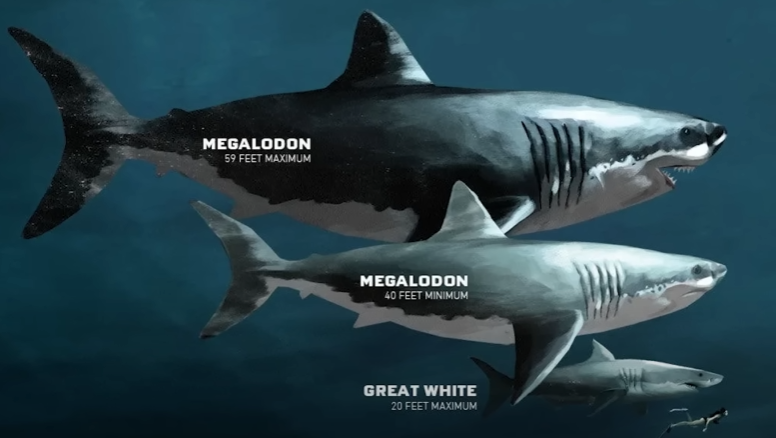Scientists are reshaping our perception of megalodons, the famous prehistoric sharks from movies like The Meg, by questioning traditional beliefs and prompting a shift in our understanding of these massive marine predators.
A groundbreaking study, spearheaded by Kenshu Shimada, a paleontologist at DePaul University, and Phillip Sternes, a doctoral candidate at the University of California, Riverside, challenges the traditional perception of megalodons’ body shape.
While past research often turned to great white sharks as a model for these ancient creatures, the new findings suggest that megalodons had slimmer bodies than their contemporary great white counterparts.
The research, based on a reevaluation of an incomplete set of fossil vertebrae discovered in Belgium, indicates a significant revision in size estimates. According to the study, the Otodus megalodon would have measured at least 11.1 meters (36.4 feet), a substantial increase from the previously estimated 9.2 meters (30.2 feet).
This revelation sheds light on the importance of employing a biologically realistic approach to understanding megalodon biology.
Megalodons’ Enigmatic Biology

Shimada emphasizes that relying on the body shape of great white sharks could result in unrealistically small vertebrae diameters for megalodons, posing a potential risk of spinal cord injuries due to inadequate muscle support.
The study challenges the prevailing notion that modern great white sharks serve as accurate analogs for certain aspects of megalodon biology. Shimada highlights the need to consider megalodons’ unique adaptations, such as the calcification of cartilage, which may differ from their modern counterparts.
Despite the allure of megalodons, their biology remains shrouded in mystery due to the scarcity of their fossil record. Shimada expresses hope for the discovery of a complete megalodon skeleton, which could unravel more about their anatomy and behavior.
Published in the journal Palaeontologia Electronica, this study adds another layer to the ongoing quest to unravel the mysteries of megalodons.
As researchers continue to correct misconceptions and explore unanswered questions, these prehistoric giants remain elusive, leaving us with more to discover about their enigmatic existence.


Comments are closed.